The Storage War on Blockchain
Blockchain is not yet applicable in various fields of the internet because distributed storage and computation are still in their infancy. Over the past few years, Filecoin and Dfinity have taken the step of breaking the limit, while some noteworthy young startups, such as DxChain, have also jumped on the bandwagon and sparked a new generation of blockchain technologies.
In the past, Amazon, Google, and Microsoft were vying for the lead in the storage and computation war. Today, another battle for technical routes between blockchain companies is heating up.
The “Airbnb” of Data Storage
When it comes to storage application of blockchain, IPFS is the first thing that occurs to people. It is a protocol that allows the use of content addressing and digital signatures to create decentralized and distributed applications. You can think of IPFS as a sort of Airbnb of data storage, which leverages the unused storage space from tens of millions of users.
Its creator, Juan Benet who is also the founder and CEO of Protocol Labs, has an ambitious plan of building an indefinite storage space. He has a grand vision for it, just like how he calls IPFS, an acronym for "InterPlanetary File System."
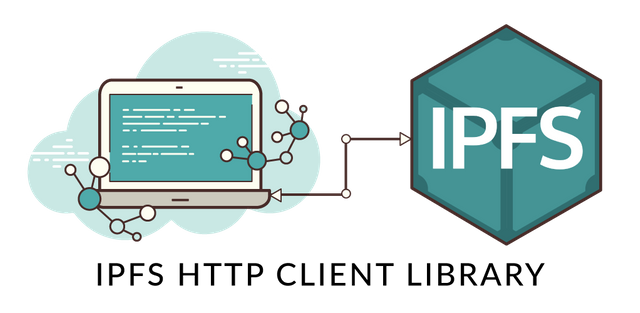
Benet also founded Filecoin, a decentralized storage network built heavily on IPFS. It allows users to rent extra storage, earn Filecoin, and exchange it for other cryptos or fiat. In 2017, Filecoin wowed the world by generating $252 million through its ICO, the biggest one in the history of the blockchain.
"There are so many hard-disk drives on the planet that are either on standby or idle right now that their owners are just losing money," Benet once said in a media interview. "So you can bring a lot of your supplies online, which will reduce storage costs.”
Fundamentally, IPFS is a distributed file storage system. Today’s Hypertext Transfer Protocol (HTTP) downloads web pages from just one location, and there is no built-in mechanism to archive online pages. IPFS, meanwhile, allows users to download a webpage from multiple sites, and can access past versions of edited data via the so-called “Version Control System.”
IPFS was founded in 2014 and received fundraising in 2017. The project is still under development.
Meanwhile, there are also many decentralized storage projects that spread data across multiple storage nodes, such as Siacoin and Storj.
Siacoin is a decentralized storage platform. It splits files data, makes copies, and spreads them across a network of computers, a.k.a sharding. These files data will be resembled and sent to users once they want to access. Theoretically, these fragment files come from different storage nodes. Thanks to a multi-chain architecture, decentralized storage is much faster than existing centralized storage solutions.
Storj is another open source, decentralized file storage solution. It uses sharding to split data, and applies end-to-end encryption to secure the data. Compared to Siacoin, Storj tends to be more centralized. It can unite a network of computer nodes that do not trust each other to be a cloud storage platform with unified logic and programs.
Both IPFS and Storj reward users who rent their unused storage space, like a sharing economy model of decentralized storage. Sharing economy has become so mainstream that nearly one-fifth of American consumers are using some sharing economy activity - Uber, Airbnb, Lyft, and TaskRabbit. Now, it comes to distributed storage.
Another area that promises a potential value once touched by sharing economy is cloud computing. Golem, which bills itself as the world’s first decentralized network, allows users to exchange their idle computing power for coins.
With Golem, users can accept the computing power from others’ computers to run a task, or supply their idle computing power to those who need it. As long as a user proposes a computational task, Golem can automatically assign the work to the network node, and other users can choose how much ram, disk capacity and CPU core numbers they can provide. The task runs on a virtual machine to ensure that it will not cause damages to the computers on the nodes, regardless of what the work is. It creates a new market where the cloud computing power will be much cheaper and more efficient.
Speaking of blockchain computing, Dfinity, a decentralized cloud, should stay at the top of the list. Especially when Ethereum is challenged to deliver sufficient computing power, Dfinity which dedicates to leaping over the barrier has attracted public attention.
Dfinity creates a decentralized network whose protocols can generate a reliable “virtual computer” running on top of a peer-to-peer upon which software can install and operate in the tamper-proof mode of smart contracts. The ultimate goal of Dfinity is enabling decentralized public networks to host a virtual computer of unlimited capacity, then to handle unlimited computing task.
However, storage and computation can be hardly separated. For example, the centralized cloud giant Amazon Web Services (AWS) provides services of both storage and high-performance computing. Some emerging and ambitious projects are eyeing both, such as DxChain.
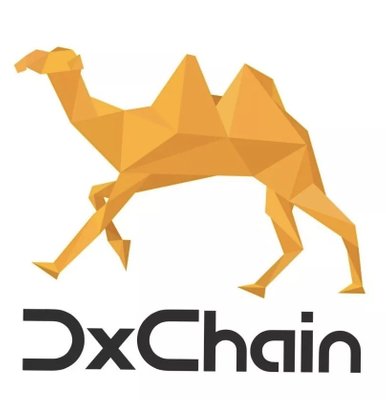
In fact, as long as storage and computation are involved, even the most successful blockchain applications - Bitcoin and Ethereum - have exposed huge bottlenecks. Bitcoin is mainly used for financial transfer, so it concerns a little for the issues of storage and computation. Ethereum appeared to address the issue a little somehow, but its amount of computation is still limited - only 3 million gas per block. That is being said that Ethereum can do just a minimal amount of computation. As a result, the current smart contracts can only perform some primary functions.
DxChain hopes to solve the problems of storage and computation at the same time. On the side of storage, DxChain learns from the mechanism of IPFS - splitting and storing files on different file nodes. Meanwhile, DxChain believes that it is challenging to meet the data requirements of storage, computation, and privacy simultaneously by just relying on one master chain.
Therefore, DxChain adds two side chains - data chain and computation chain - in the way of multi-chain architecture similar to Lightning Network. The master chain is only responsible for recording events ( e.g., transactions ), thus improving the overall network performance to support large-scale data storage and high-speed computation. DxChain calls it “Chains-on-chain” architecture.
Besides, DxChain also refers to Hadoop, the best distributed architecture in a centralized storage system. Hadoop solves the problem of distributed data storage within the same organization and company. However, blockchain is a more appropriate technology to reach trust between different organizations and participants and realize multi-central distributed storage.
DxChain is combining Hadoop's advantages and the unique mechanism of blockchain to solve the problem of distributed storage and computation in a decentralized environment.
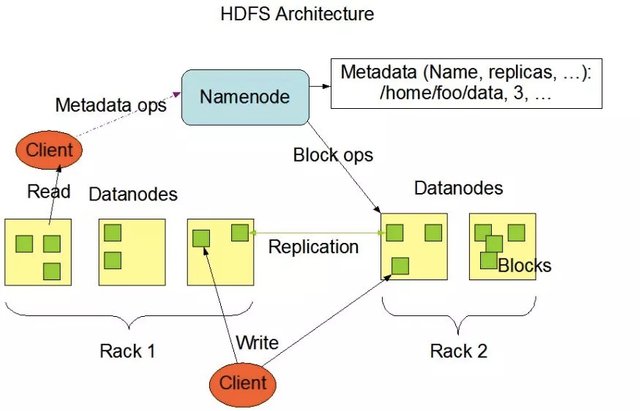
The first storage war
In 2006, AWS introduced its first-ever products. In an age when social media and mobile startups rose up, penny-wise application developers and entrepreneurs preferred handing over many troublesome issues - including running servers and data storage systems - to third-party platforms. AWS soon came to the first choice.
AWS initially had only three services. Now it expands to over 70 different functions operated by Amazon's data center, which has a significant influence on the internet. Amazon often boasts that AWS makes building a technology company as simple as piecing together Lego sets.
However, while Amazon was consolidating its leading position in the rapidly growing cloud computing industry, it also faced the challenges. Some enterprises were not willing to lie in AWS products in afraid of being locked up in the world of Bezos, CEO of Amazon. Many believe that you will eventually find difficulties to leave Amazon if you heavily rely on it.
Led by CEO Satya Nadella, former chief of Microsoft’s cloud computing division, the Seattle tech giant has bounced back and pumped massive investments into the cloud service. It quickly paid off as Microsoft Azure is now in the second place of the cloud computing market.
Not just outdone by Amazon and Microsoft, Google and IBM also want a piece of cake. Many of these kicked off a pricing war in 2015. Meanwhile, when the giants of cloud computing were locked in a tight fight, blockchain was rolled out.
In fact, a centralized storage and computation platform like AWS have drawbacks. Privacy disclosure is one of the many. The administrator of network disk can directly view and delete files uploaded by users from the server platform. Another is the security issue. There is a tremendous amount of user data stored on the cloud server that might be vulnerable under the hacker attack.
But the matter of the utmost importance is data privatization. There is a tremendous amount of data stored in the decentralized cloud storage. Users cannot directly access or utilize their data. The extreme case of data abuse did not occur in several cloud storage and computing companies, but on Facebook - Cambridge Analytica obtained Facebook users’ data and used it to influence the 2016 presidential election in the U.S. It sent a widespread concern, making the public aware of the severe consequences of data privatization.
Decentralized storage and computation can reduce costs by leveraging idle storage and computation power. Owners of storage resources can make profits from the exchange of storage while the price is much lower than the one of centralized storage.
Data can be divided into small pieces, which will be stored on many nodes after encryption, thus avoiding the risk of centralized storage. Even if a bit of data is leaked, it is only part but not all of the data.
More importantly, decentralized storage suggests that a certain magnate does not privately own data. Blockchain advocates believe that this technology can help internet return to an open state.
The new battleground
Even Bitcoin and Ethereum, the two most successful applications in the blockchain world, are also limited in many ways. They cannot adequately deal with general purpose computing problems, but can only operate transaction-related computation and store ledger data.
But bitcoin gifted the blockchain world with Proof-of-Work, a consensus mechanism. Bitcoin rewards people who perform maintenance of distributed ledgers. Many derivative algorithms based on the concept of PoW were spawned over the past few years.
Although there are many public chain projects aimed at solving a series of problems, there is no pathway by far that provides computing services on big data and machine learning in an environment of distributed data storage and computation.
Compare with the old internet, it is critical for blockchain to solve storage and computation issues. As cloud storage is an extension and development of cloud computing, and AWS provides storage and computation services, and so is blockchain.
We believe DxChain has the potential to live up to the expectation.
Nakamoto’s consensus protocol consumes a significant amount of computational energy to maintain the blockchain rather than providing real values.
To solve the problems of data storage, computation, and privacy, DxChain introduced the “Chains-on-chain” architecture with a master chain, a data side-chain, and a computation side-chain.
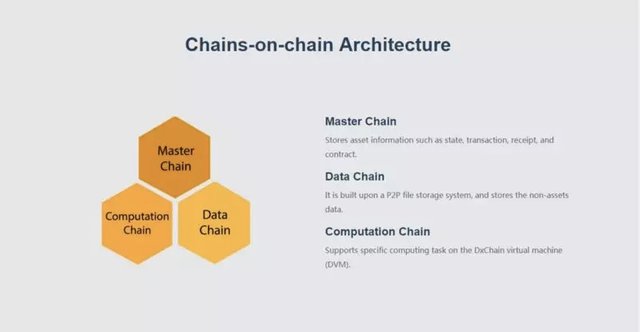
In storage, DxChain refers to P2P storage networks such as IPFs and Storj. A file is uploaded and split into small pieces and is then randomly distributed on different mining machines. As for which mining machines are randomly distributed, these data are stored in the blockchain. DxChain utilizes the idle hard disk resources with a distributed file system. The data in the blockchain can ensure that the economic model will make sense. Owners of unused hard disks will be willing to join this economic model and contribute their resources.
Meanwhile, DxChain can enable computation, which is unavailable for Filecoin.
Bitcoin uses the blockchain technology to store all transaction records in a consensus network, which requires more than half of its active nodes to give consent. It is impossible to host all states of computations in blockchains to ensure consensus. However, with the chains-on-chain architecture, DxChain can write each transaction, i.e., storage and computation requirements, on its side chains. The master chain runs smart contract to control two sides chains executing computational tasks and data storage. As long as side chains take over the subdivided storage and computational tasks, DxChain can ensure the performance of the master chain.
Compared to other computation-related projects, DxChain is exploring a new direction.
The existing projects, such as Golem, a supercomputing platform, can provide technology solutions such as 3D rendering. Dfinity, a cloud computing platform in the blockchain, cannot solve the problem of "where the platform's data comes from."
DxChain does not just provide a storage solution but also intends to solve the problem of "where the platform's data comes from." DxChain can perform fine-grained operations on stored data. And this type of fine-grained data storage and computation enables a new business model.
For example, let’s say a researcher hopes to collect data of “a male, under 35 years old, resides in California”. This kind of data transaction can only occur when a platform has data and can perform fine-grained operations on it. DxChain can enable data to be traded and circulated by protecting its sensitive information.
Blockchain offers a fair value trading model for internet information. And it happens to be the direction in which DxChain is putting efforts.
Today, many projects in the area of storage and computation are under development. Some of them have been funded and launched coins. A report from Node Capital uses cryptocurrency market cap to evaluate the market share of each blockchain storage project. According to the report, among all these cryptocurrencies of decentralized cloud storage projects, Siacoin has the largest market share, accounting for 47 percent, followed by Factom for 18 percent and Storj for 10 percent.
Young projects such as Filecoin and DxChain are pushing the limits of blockchain and solving practical problems. While these projects are still under development, they have a big chance to break the old pattern and reimagine the industry.
At a time when the cloud computing war is yet not over, a new storage and computation war has just begun.
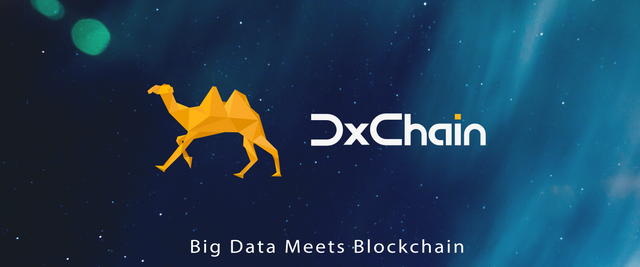
With regards to DxChain:
A Decentralized Big Data and Machine Learning Network Powered by a Computing-Centric Blockchain.
Website: http://www.dxchain.com/
Telegram: https://t.me/dxchain
Twitter: https://twitter.com/DxChainNetwork
upvote for me please? https://steemit.com/news/@bible.com/2sysip